- Continue Shopping
- Your Cart is Empty
North Fork of the Flathead River - Trip Report
Over the weekend my brother, sister and I floated down the North Fork of the Flathead River along Glacier National Park. We caught some fish and had some fun. I mostly want to share the photos from the weekend along with a couple words. I hope you enjoy.
I haven’t blogged in a while but thought I should share some photos from this past weekend of the float my brother , sister and I did. John and Elizabeth both flew into Montana for the weekend and we planned to float and fish the North Fork of the Flathead River. For those who don’t know, this stretch of river runs along the western edge of Glacier National Park.
We drove up from Missoula on Friday morning and we were lucky enough to use the Omnibar car because my personal vehicle isn’t able to tow a trailer. This is us at the Ford put in on Friday. (about 12 miles from Canada) You could hear and see thunder and lighting in the distance but more on that later.
Here we are just about to set out on the river. None of us had ever done this stretch before let alone an overnight rafting trip. We most likely looked like amateurs.
(left to right: Brian(me), John, Elizabeth)
Here we are as we just set out on the river. This was the only time the sun came out for more than a minute.
Our family should not be considered fishermen. We had to lookup how to tie flies before the trip and most certainly did not know how to cast or really catch a fish. That said, here is my first ever Montana fish. That is my brother holding the net.
Here I am trying to unhook and then hold the fish. The fish slipped out of my hands before we could snap a photo.
About 2-3 hours into the float is started to thunderstorm and rain. We got to shore just in time to put up our tarp and huddle under it and ride out the rain for 15 minutes. We then setup camp and started cooking. Here I am cooking steak and veggies.
It rained most of the night and we were treated to a good lighting storm. John slept in his hammock (under the tarp) and Elizabeth and I slept in my tent. We all stayed dry. The next morning we got on the river around 11am (we think) and here is Elizabeth and what the weather looked like for most of the day.
Before lunch, John caught a fish. It was so small that it slipped through the holes in our net but that didn’t stop the stoke.
We went through some beautiful and clear water, saw a Grizzly Bear and then next thing we knew I caught my second fish. Elizabeth got to row and we think that contributed to my second catch. Here I am trying to do my best fish photo pose.
Next thing we knew we came upon a log jam and had to drag the boat around it. It was probably about a half hour of dragging and it didn’t help that John didn’t bring water shoes.
Then, soon enough, we were at the Coal Creek pull out. We got off the river around 6pm. This is a photo taken while I was trying to hitch hike back to the car. Luckily I made it in good time.
That’s pretty much it. We camped near Polebridge on Saturday night and listened to some live music at the bar. We ate some well-deserved bear claws from the Mercantile as well.
That’s all for now and you can view my other blog posts here.
Vineman Triathlon - Andy Drobeck Q&A;
After joining the Omnibar team in April of this year, Andy Drobeck has been gaining momentum in his second year as a professional triathlete. After winning the Vineman Full Triathlon in Santa Rosa, CA this past weekend, we caught up with Andy to take a deeper look at this seemingly fast track to success. Hint: It's rooted in passion, family support, and life balance.
--

What kind of traveling logistics do you encounter trying to get your gear and family to a race like Vineman Full?
Ask my wife (who is a runner) about the logistics involved in triathlon. She'll tell you how much of a nightmare it is. I crave the days (when just competing in road running races) of just flying with a carry on, hitting the expo to get a BIB number, and sitting around for race morning. Triathlon involves flying (or mailing your bike). Packing all the gear you need for a variety of weather conditions. Then there are usually 1 or 2 transition areas that you have to check gear at either the night before or race morning. Driving the bike course is often a good idea. Have to find a place to practice swim. Have to get in training the days before. Need tools to put the bike together. It goes on and on. What ends up happening is the 3 days before a race way busier than one would expect. Then after I just want to sleep and I end up spending three hours rehabbing gear and packing my bike back up. For the family its challenging as well. They have to study race maps to figure out when and where I'll be at certain spots and they're out there for 9 hours.
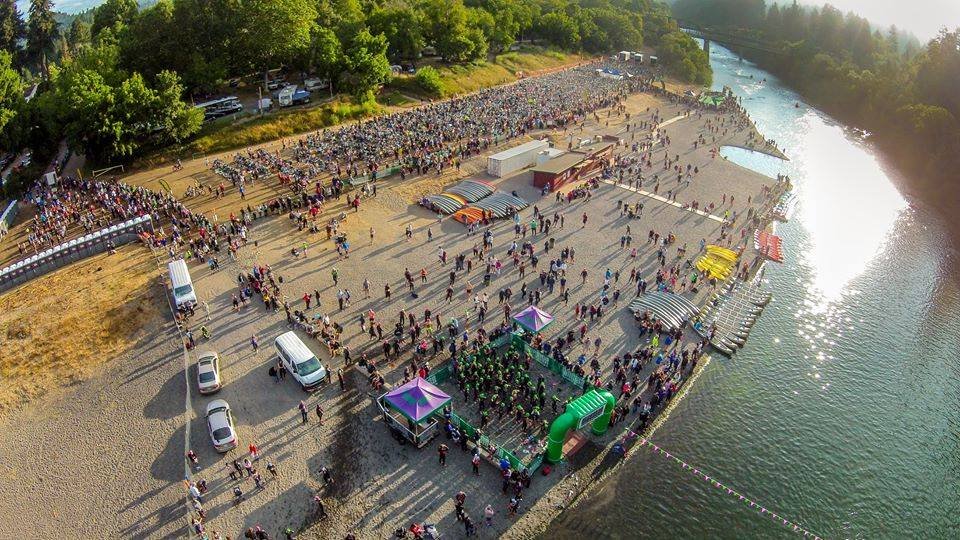
How did Vineman Full compare to other full triathlons?
There are generally 4 distances of triathlon. The Full or Ironman is the longest at 2.4 mile swim, 112 mile bike, and 26.2 mile run. A half is half that distance. Then an Olympic distance is about half of a half (its actually swim 1500 meters, bike 40K, run 10K). The shorter distance is a sprint triathlon which is what you'll see a lot of local races putting on. Its usually around a 750 yard swim, 20K bike, and 5K run. To put it into perspective a full generally takes me around 9 hours, a half 4 hours, a oly 2 hours, and a sprint 1 hour. Comparing Vineman to other full's I've done I would say its one of the best courses out there. Its a very swim friendly venue, the bike is on curvy rolling hills through vineyards, and the run is on similar terrain to the bike. Also its a very friendly low key atmosphere that looks to see athletes succeed rather than just an entry fee.
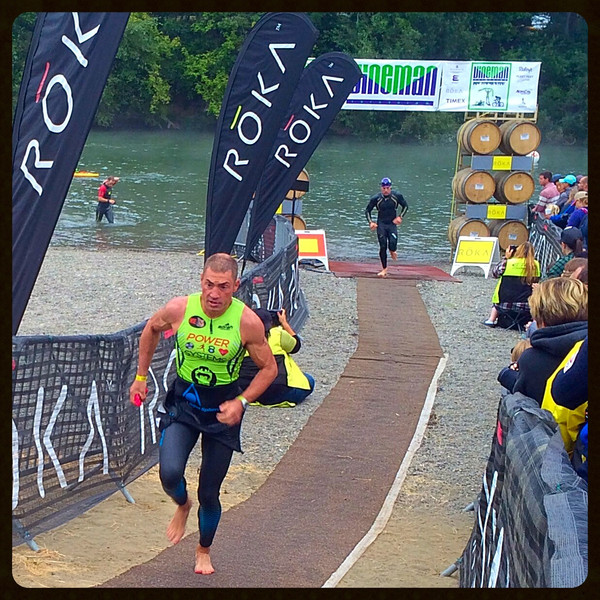
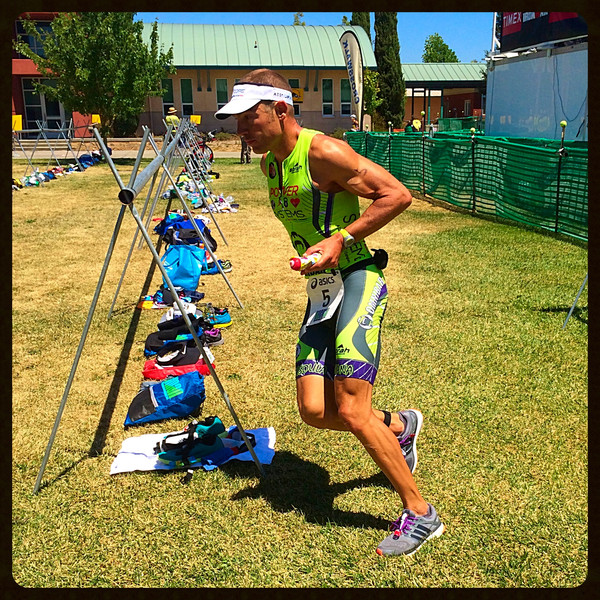
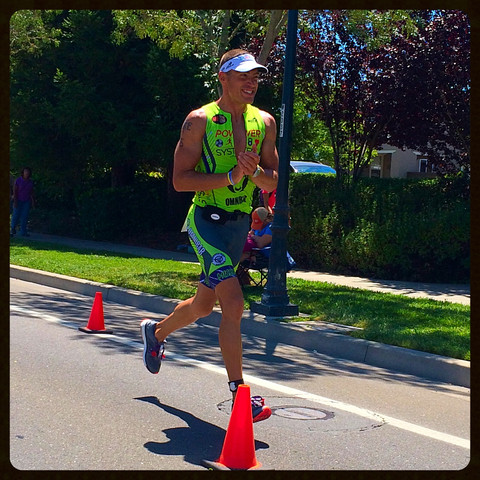
Endurance Driven Ingredients
Endurance driven athletes are fueled by motivation, persistence and of course: food. Through Netflix documentaries, fast food nations and super-size-me stunts, the shadows of the food industry are quickly being lit by the hot light of Hollywood.
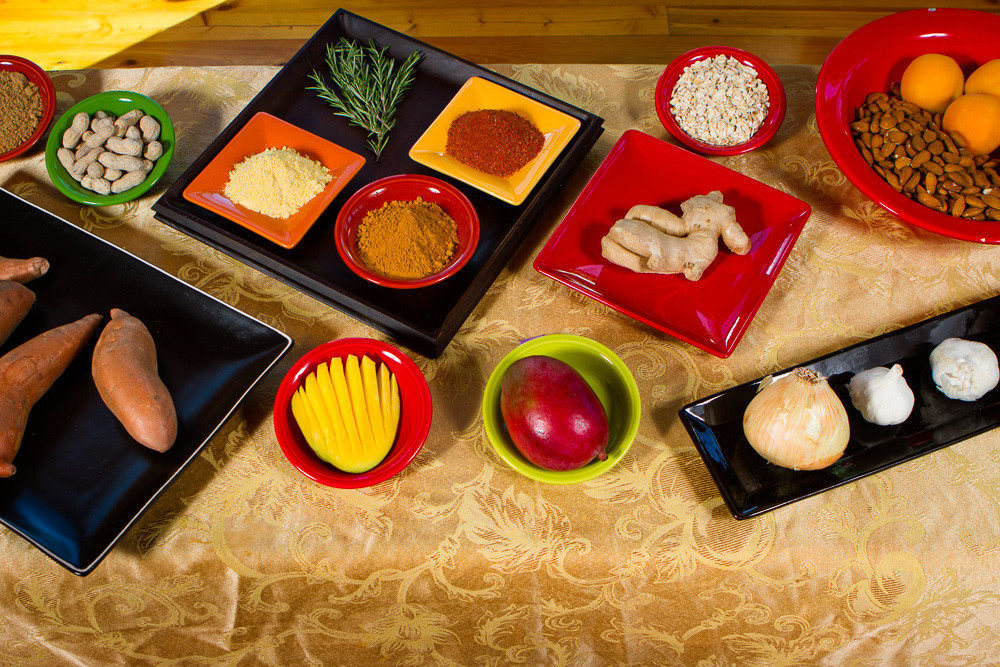
This is good news for those of us in the world of clean eating. People are voting with their wallets and it’s showing up in grocery stores across the country. More selection, better taste and amazing results make the clean eating wave. Individuals practicing clean eating report an increase in happiness, energy and endurance. The chart below comes from the Office for National Statistics. Compiled responses from people reporting on their own wellbeing show health as the overwhelming leader in what drives personal wellbeing.
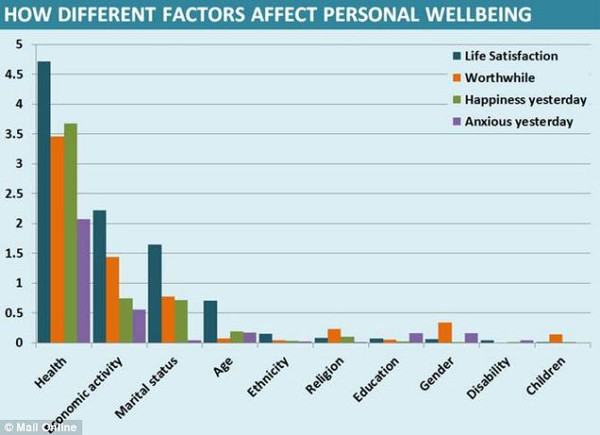
Origin to Your Plate:
Clean eating has a simple goal: consume food with the shortest path from origin to plate. Processed? Not clean. Refined? Not clean. Behind the glass of a vending machine? Most definitely not clean!
Here are a few power foods we here at Omnibar believe help drive our endurance athletes and deliver a delicious and healthy option for adventure.
Almond Butter:
Not the type of butter you pump onto movie theater popcorn. Almond butter can be used as a substitute for high sugar and high preservative peanut butter. Rich in vitamin E, almond butter helps reduce the risk of cognitive disease. Almonds lower cholesterol and reduce blood sugar spikes and they can have positive effects on heart health.
Sweet Potatoes:
Wait, aren’t french fries made from potatoes? This is true, however, the sweet potato is to the potato as you are to your uncle Jimmy. Yes, you share some of the same relatives, but you couldn’t be more different. The Center for Science in the Public Interest calls the sweet potato one of the most nutritious vegetables in the world. Some like to enjoy sweet potatoes smothered in butter and caked with some brown sugar (not clean). As a raw ingredient, it provides a big impact on taste and an even bigger impact on health. From a science standpoint, sweet potatoes are rich in vitamin C and a great source of fiber and potassium. Vitamins and minerals that help athletes stay healthy by boosting immune systems and recover faster.
Rosemary:
Rosemary looks nice in a fancy cocktail, but as a raw ingredient, in days-of-old, rosemary was hailed for its medicinal powers and it was thought to help hair-growth. Although science doesn’t exactly prove the hair-growth claim, rosemary is high in calcium and vitamin B6. As an herb, you’re not going to be serving an entree of the christmas-tree scented green, but in the world of clean eating, rosemary is a herb of choice. Calcium, of course, promotes bone strength and helps the endurance driven athlete do what they love longer into life.
Flaxseed:
Flaxseed just sounds like an ingredient with troves of health benefits. Luckily, there’s scientific research to back it up. A term most people haven’t heard before is hypertension. Commonly known as high-blood-pressure, flaxseed is shown by Greek researchers to be able to help decrease blood pressure. For endurance driven athletes, this means avoiding painful headaches. Oh, and Iowa State University researchers found it lowers cholesterol and reduces the risk of prostate cancer in men. Treasure troves of benefits.
Plums:
Dried plums, also known as prunes, help the endurance athlete keep the bowels clean. Managing the bathroom stop is a delicate science. Let plums help! Ironman? Plums and prunes help increase the absorption of iron into the body. For athletes, iron is a fuel that can’t be ignored. Eradicating different causes of fatigue is a health benefit and an attractive one at that.
Have a favorite power food? Let us know on twitter about it!
Hardrock 100 - Mike Foote Q&A;
Mike Foote has been training hard for the Hardrock 100, which is coming up this weekend, so we asked him to have his fans submit questions via his Instagram and Facebook about what it takes to train for the race. There were a lot of questions so we chose some of our favorites. Some are on topic and others not, but here are Mike’s answers.
If you don’t see your question answered below please reach out to us on our Facebook page and we’ll do our best to get it answered.
- -
Foote on course getting some final training in last week.
It was a fun process to answer these. Thinking back on my preparation leading into the race is a good exercise. Thanks again for all the questions. Here’s my best crack at answering them.
@ mdsears - With great success in running Hardrock in 2010, what was your greatest lesson on the course you can use to hopefully improve your experience?
Great question. I’ve thought about this quite a bit actually. I literally came into this race blind in 2010, with no real knowledge of the course, or expectations. Without much knowledge of the course I didn’t really have a true respect for it. After completing it in 2010, I now know how burly this race is and have prepared better and more specific for it than in 2010. Also, I believe in the “go slow to go fast” principal, which is to say that I learned that by moving well, but without rushing, will lead me to my best performance on a course like this.
@dumpster_diver - What metrics did you change in your training compared to other 100’s? Time? Distance? Vert?
With a little nudging from my coach, Jason Koop, I really honed in on the specificity principal this year. In years past I would run a 120-130 mile week with 18-20,000 ft of vertical gain on the much more runnable trails in Missoula to prep for a race like Hardrock or UTMB, which are both much steeper. Hardrock, for example, is 100 Miles with 33,000 ft of gain. Therefore, even though the amount of time I was running in my final training block was similar this year to years past, I ran less overall mileage at a slower pace on steeper terrain to mimic the Hardrock race pace.
Also, my higher mileage weeks (100+) were lower in number than years past. I did lower volume, higher intensity training blocks leading into my higher mileage training block which has only been the last 8 weeks or so. I hope that leaves me from feeling too overcooked on the starting line, which I have been guilty of in the past.
@ k__pat - How do you keep a smile on your face when the mountains can be so brutal Foote?! It's very inspiring!
I was blessed with a grimace that somehow looks slightly like a smile. It is very deceiving.
@mhiday82 - What are some of your favorite nutritional sources for fats and proteins while running?
This may not come as a surprise, but Omnibar fills that niche quite well for me. They are a great balance of carbs, fat and protein and are made with real food ingredients, such as sweet potatoes, almond butter, oats and flaxseed meal, which are a big part of my diet anyways. Also, they are a great break from the more sugary fuels I take in during a race like Hardrock.
@young_cappy - Did you see yourself running such a prestigious race in the early stages of your running career? Also what do you feel now looking back on your beginnings as an ultra runner?
Good question. I very clearly remember a good friend and early mentor for me in ultra running telling me to sign up for Hardrock in 2010. I don’t think I had ever heard of it before. Never the less, I took his suggestion, signed up for the lottery, and was fortunate enough to get in. So I didn’t see it as prestigious because I literally didn’t know any better. Looking back at it all now, there was a freshness and simplicity to it all that was intoxicating. My relationship with running has changed a lot in the last 5 yrs since my first Hardrock, for better and for worse at times. In the end, its races like this, and the culture that surrounds it that reminds me why I fell in love with this sport in the first place.
@gsleblanc - What's it like to see the sun rise, set, then rise again before you cross this race's finish?
For me, the first sunrise goes slightly without notice as it usually coincides with the beginning of the race and there is a lot for other stimulus that drowns it out a bit early on. The sunset though is fairly ominous. And the second sunrise is so glorious and warming and life giving, it is hard to put into words. My energy and spirit are at their lowest during the hours just before the second sunrise and it really re energizes me for the final push.
@fojovo - What do you do to prevent overuse injuries while training for a 100 miler?
Knowing myself well enough to integrate proper rest when I’m close to the limit of going over the edge into an injury. I also do active release stretching, foam rolling and massage. And finally I really believe in strength training, if done properly, to strengthen your core and keep your form efficient so that you are less likely to open yourself up to injuries. I employ all of these strategies to try and stay injury free. In my experience in the last 6 years of competitive running, the more I integrate all of these things into my routine, the healthier I am. Funny how that works.
@natefsmith - What do your cross train days look like? (i.e. any gym time, upper body, swimming etc)
In the winter I do a lot of ski mountaineering training and back country skiing. I find it to be such a good way to give my body a break from all the pounding of the running season. Once I am in the running season though my cross training is pretty limited. In an ideal world, and when I’m in a good groove, I do a 15-20 minute core/strength training workout 2-3 times a week to make sure I’m keeping muscles firing and balanced. I make it a point not to get too crazy in the gym though with anything that trashes me too bad, since I do enough of that from running, but I do just enough to keep feeling healthy and strong to compliment the running.
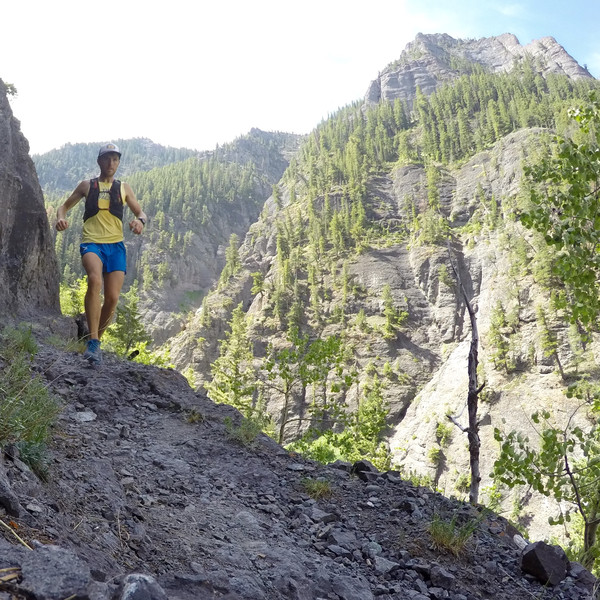
Foote on course training
@jeremywolfrun - How hard was it for you to come to terms with training and racing using hiking poles?
After a winter of using them in my ski mountaineering training I figured I would keep the party going. Plus, I just had to sincerely ask myself if I thought using poles would get me to the finish line of the race faster, and I think they will if used appropriately.
@jaxcharlie - How much time have you spent above 10K feet?
@fboughner13 - How do you prep for the altitude of such a high race while doing most of your training much lower?
Its tough to be fully prepared for the high country of Colorado while living in Western Montana. Missoula sits at 3,200ft, which is a far cry from the 11,000ft average elevation of the Hardrock Course. This year, I partnered up with Hypoxico Altitude Training Systems and got myself an altitude tent for the last 4-6 weeks leading into the race. To be honest, I was kind of unsure if this would be helpful, but I ran/hiked up to 14,000 ft. today and was pleasantly surprised to feel better than I ever have at that elevation. Normally I have a headache and lethargy, but today I just felt slightly more out of breath than normal, which was fine by me.
@nicksnow242 - If you could be sponsored by any company (besides Omnibar) what would it be?
Well, besides my other current sponsors, The North Face, Big Sky Brewery, Big Dipper Ice Cream, I would have to say it would be cool if the state on Montana wanted to get into sponsoring local mountain runners. You know, with state employee benefits and pension.
@runnersedgemt - We're not sure if folks know that you actually work full time, some weeks more, along with all your big training. How do you manage it all?
This is a loaded question coming from my employer, The Runner’s Edge! First of all, though I work more or less full time as a race director, many days I have lots of flexibility to get my training in in the morning before diving into my work the second half of the day. It’s a balancing act and I no doubt work a lot more on my easier running days, and work less on my larger days. When heading into the week, I look at both my potential running and work schedule and begin to plan out when to schedule a day full of meetings and when my long runs or big workouts will be. Its an ever evolving process and isn’t always pretty but it works for me and I’ve gotten accustomed to the balancing act, though I’m perpetually trying to refine it. I should mention again I’m lucky to have an employer who allows me that flexibility and trusts that my work is a priority and I will get it done amidst a big training cycle. In the weeks leading into Hardrock this year, my couple easy days of the week would consist of only an hour run, or nothing at all, which is when I would have my most productive work days, while my biggest running days were in the 8-12 hour range, and you can imagine not a whole lot for work gets done on those days.
Colleen Smith, The Runners Edge: Can you work for me next Friday?
Sure, can you run 100 Miles for me, preferably at a fat pace?
@thrphoto - What do you eat for breakfast everyday? Not necessarily race days.
I run in the morning within an hour of waking up 99% of the time so I keep breakfast light and then have a bigger meal after training. I normally just have a cup of coffee with a piece of whole grain bread with almond butter or peanut butter. Sometimes for bigger days Ill cook up some steel cut oats with a little maple syrup, cinnamon, berries and walnuts.
Post Run, or breakfast #2 as I’ll call it, almost always consists of a smoothie with fruit and greens and something with protein, like greek yogurt and nut butters. I’m also a sucker for a good egg scramble with a fresh salsa.
@megs1768 - What do you eat during the race? Solids vs gels? Do you have a set amount of calories or carbs that you try and get per hour?
My nutrition strategy for racing is ever evolving. For Hardrock, since it is a slower burn kind of race. I’ll have the normal gels and gummy chews, but plan to integrate Omnibars earlier on to keep from getting a sour gut. They are savory and have a mush more balanced macronutrient profile and they reset my stomach when it threatens mutiny.
In my training I eat 200-300 calories and hour after the first 90 minutes. I’ve been pretty strict with this leading into the race so that my body is very used to this and there are no surprises on race day. If I start to feel depleted, I’m not afraid to eat an addition few hundred calories at an aid station, especially before a long climb so that I can digest it before the next jostling descent.
@srbrownmt - What's the most unique food or drink you've ever seen at an aid station, and did you try it?
There were some noodle bowls with floating mystery pieces in them that I considered at UTMF in Japan. My first year at UTMB I defaulted to handfuls of stinky cheese and sausage late in the race. My crew that year likes to remind me of the cheese literally spilling out of my shorts pockets leaving the aid station.
Sam Nelson - I'm trying to improve running uphill without walking. Is there a trick with my stride, or is it just practice?
First of all, sometimes if the trail is steep enough I think walking is more energy efficient than running. But when I’m on the type of trail that is right on the edge of runnable I work hard to run within myself aerobically. If I’m going anaerobic, then physiologically that can only last for so long, so I try and be honest with myself about what pace I can run that is sustainable for a long time.
As for stride, I try and shorten the length of my stride so that my feet stay under my body more. I make sure the momentum of my arm swing carries me forward, and not wastefully side to side. And lastly I try not to bend over at the waist, this makes for tougher breathing and overall poor form.
- -
Thats all for now and we hope you enjoyed this. As a thank you for reading, use the below code for 15% off + free shipping on our store and remember to follow along on our twitter for race updates.
Code: hardrockmike
Exp: 7/31/15
Pre-Race interview with iRunFar:
Toxaway Loop + Salmon River - Trip Report
Over the weekend I drove down to Stanley, Idaho and met up with my brother and his friends. We floated the Salmon River and spent two nights camping in the backcountry. It was a weekend filled with laughs, alpine lakes and too many mosquitos. This is a blog about what we did with some photos of the trip!
My brother and I, John, have been getting together 2-3 times a year for the past couple of years to ski, raft or hike together. It’s fairly easy since he lives in San Francisco because flights are cheap, especially on non-holiday/off weekends, which is when we choose to do this type of stuff together. We always include friends and last year John and friends came to Montana and we summited Mount Siyeh in Glacier National Park and then over Thanksgiving we skied Mt. Bachelor and in the late winter I visited him to ski Squaw Valley. You can see the trend. We like to get after it and this past weekend was our (now annual) summer trip.
Anyways… now onto what we did in the Sawtooth Mountains.
We had this trip planned for about three months. John and two of his friends. Justin and Stuart, booked flights just over a month before the trip. The plan was for them to fly into Boise and drive to Stanley where we would all meet on Thursday evening. I was to drive down from Missoula and I was lucky enough to have Anthony join for the drive and trip to make a group total of 5 people.
As Anthony and I were driving we got word that John, Justin and Stuarts flight got canceled. Not delayed or rescheduled. Just canceled. (mechanical issues, thanks Alaskan!) All of a sudden, on the side of the road, Anthony and I were wondering if the whole weekend was in jeopardy and what to do. The next available flight for them wasn’t until Friday evening, which meant we would miss floating the Salmon River and wouldn’t be able to start our hike into the Sawtooths. This all meant that the weekend wouldn’t be worth it without Friday. A decision had to be made so they canceled their return flight, took a travel voucher for another time (our next trip) and all hopped in the car and started the overnight, 13 hour drive from San Francisco to Stanley, Idaho. Weekend was now a go.
So, while those three suffered through the night driving, Anthony and I continued towards Stanley and found a campsite just outside town for the night. This is us on night one.
The next morning the two of us drove into Stanley and sat down at a restaurant to eat some breakfast. No less than 5 minutes later, John gives me a call to say they are just rolling into town and asks where we are. Funny how it worked out so that we could all eat breakfast together.
Our first plan was to duckie a small stretch of the Salmon River with the Sawtooth Adventure Company. This is us right before we got on the river but we had a blast! Duckies (inflatable kayaks) made it a little more fun than being in a large raft because we got to control our route on the river. I don’t have any more photos from the river but we swam, enjoyed the sun and drank some beers. Overall, an awesome start to the weekend.
Left to right: John, Anthony, Justin, Stuart, Me(Brian). We take floating seriously.
After floating we lounged for a little bit and then stuck to our original plan of getting a couple miles in on the trail. Here is a map of the loop we hiked and camped on. We hiked counter clockwise and the loop total was 18 miles. Pretty manageable over two nights.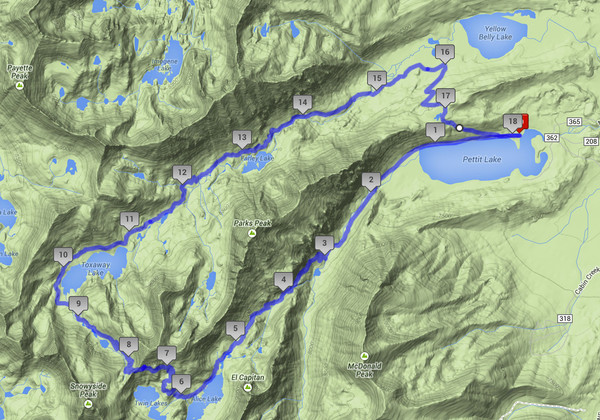
Image from google.
Here is a photo of us on the trail on Friday evening.
The first night we camped at Farley Lake. The guidebook said we hiked 4.2 miles but it felt like way more after floating and for the guys who drove through the night. As soon as we got near the lake it started to get really buggy. Mosquitos plus everything else to be exact. This is a long exposure from the campsite.
Photo: Stuart
We got on the trail sort of early (around 8am) to try and beat the heat on Saturday. Our destination for the night was the Twin Lakes which meant having to go up and over the pass. Here is a view of Toxaway Lake and you can see the pass behind it. (the drainage between the two peaks)
Here is a photo of the five of us at the base of the pass. The guidebook said we had about 1000 feet of vertical elevation to gain from here to the top.
Here we are hiking up the pass.
This is us at the top of Snowyside Pass with the Twin Lakes below.
Photo: Stuart
From the top of the pass down to the Twin Lakes wasn’t bad. It maybe took us about 45 minutes. We then setup camp and got to enjoy ourselves. We went swimming, fished, and pulled out some whiskey we brought along once the sun went down. This is me in the lake.
This is Stuart floating on his sleeping pad.
We got to enjoy our whole afternoon on the lake. We scored one of the best spots because we were on a little peninsula that jutted out into the middle of the lower Twin Lake. It honestly felt like we were sleeping in the middle of the lake. This is a photo of the spot taken Sunday morning and you can see our tents popping up in the middle of the point.
We go up early to try and make it to the cars at a reasonable hour so John, Justin and Stuart could drive back to San Francisco so we hit the trail. We had to cross the creek a couple of times and I fell in which meant I had to hike out with wet feet and shoes.
Photo from a bridged creek crossing.
The last mile of the hike was along Petit Lake and we came across this rope swing which I took full advantage of.
That was pretty much it. I would highly recommend visiting Stanley sooner rather than later because the Sawtooths and Salmon River are really worth it. If I could give one piece of advice, bring bug spray and a swimsuit.
Check out what else I have been up to here and remember, get outside and get after it!
Explore these sites
- Non Gamstop Casinos
- Casino Sites UK
- Best Non Gamstop Casinos Uk
- Nuovi Casino Online
- UK Online Casinos Not On Gamstop
- Casino Non Aams
- Casino Sites Not On Gamstop
- Slots Not On Gamstop
- Non Gamstop Casinos UK
- Casinos Not On Gamstop
- Non Gamstop Casinos UK
- Non Gamstop Casino Sites UK
- Casino Non Aams
- Non Gamstop Casinos UK
- Casinos Not Signed Up To Gamstop
- Casino Sites In UK
- Meilleur Casino En Ligne Retrait Immédiat
- Meilleur Casino En Ligne
- Non Gamstop Casino Sites UK
- Casino Not On Gamstop
- Casino Sites UK Not On Gamstop
- Non Gamstop Casino UK
- UK Online Casinos Not On Gamstop




